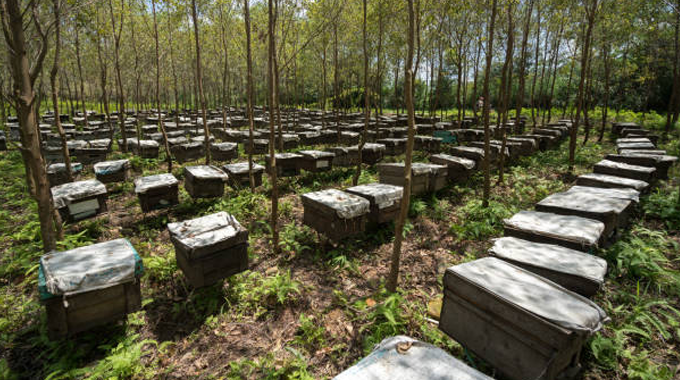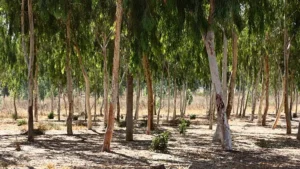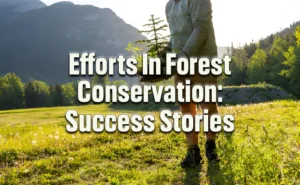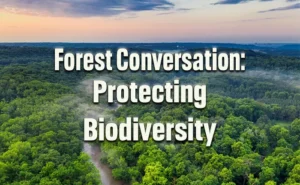Ecosystem-Based Forest Management
- August 8, 2024
- 0 comment
Ecosystem-Based Forest Management (EBFM) is a holistic approach to forestry that emphasizes the preservation and enhancement of the ecological integrity of forest ecosystems. Unlike traditional methods that focus primarily on timber production, EBFM considers a wide range of ecological functions and values, including biodiversity, water quality, and habitat connectivity. This management strategy seeks to maintain the natural processes and dynamics of forest ecosystems, promoting resilience and sustainability.

By integrating scientific knowledge of forest ecology with adaptive management practices, EBFM aims to balance human needs with the long-term health of forest landscapes. Key components include protecting old-growth forests, conserving species diversity, and implementing practices that mimic natural disturbances. Through EBFM, forests are managed not just for their economic value, but for their critical role in supporting diverse life forms and providing essential ecosystem services.
List of Ecosystem-Based Forest Management
- Historical Context and Evolution
- Key Components of Ecosystem-Based Forest Management
- Implementation Strategies
- Challenges and Barriers
- Benefits of Ecosystem-Based Forest Management
- Future Directions and Innovations

Traditional Forest Management Practices
Traditional forest management practices have long focused on maximizing timber production and economic gain. These methods often involved clear-cutting, monoculture plantations, and the suppression of natural disturbances like fire. While these practices provided short-term economic benefits, they frequently led to significant ecological degradation, including soil erosion, loss of biodiversity, and disrupted water cycles.
Emergence of Ecosystem-Based Approaches
The limitations and ecological consequences of traditional forestry prompted the development of ecosystem-based approaches in the late 20th century. These new methods aimed to balance timber production with the preservation of ecological integrity. Influenced by growing environmental awareness and scientific advancements, ecosystem-based forest management (EBFM) emerged as a holistic strategy that considers forests as dynamic ecosystems rather than mere resource reservoirs.
Key Components of Ecosystem-Based Forest Management

Biodiversity Conservation
A cornerstone of EBFM is the conservation of biodiversity. This approach recognizes the intrinsic value of all species and the critical roles they play in maintaining ecosystem functions. By protecting diverse habitats and promoting species richness, EBFM enhances the resilience of forest ecosystems to environmental changes and disturbances.
Maintenance of Ecological Processes
EBFM emphasizes the importance of natural ecological processes such as nutrient cycling, pollination, and predator-prey interactions. Maintaining these processes is essential for the health and stability of forest ecosystems. Management practices are designed to mimic natural disturbances and support the continuation of these processes, ensuring forests remain vibrant and functional.
Sustainable Resource Use
While conservation is a key aspect, EBFM also aims to ensure that forests can provide resources sustainably. This involves careful planning and monitoring to balance resource extraction with the long-term health of the ecosystem. Techniques such as selective logging and controlled burns are employed to minimize ecological impact while allowing for sustainable use.
Implementation Strategies
Adaptive Management Techniques
Adaptive management is a flexible, iterative approach that adjusts practices based on continuous monitoring and feedback. This strategy allows managers to respond to new information and changing conditions, ensuring that management practices remain effective and sustainable over time.
Use of Natural Disturbances and Succession
EBFM utilizes natural disturbances like fire, storms, and insect outbreaks to maintain ecological balance. By allowing or mimicking these disturbances, managers can promote natural succession processes that enhance forest diversity and resilience. This approach contrasts sharply with traditional methods that often seek to eliminate such disturbances.
Protection of Old-Growth Forests
Old-growth forests are invaluable reservoirs of biodiversity and ecological stability. Protecting these areas is a priority in EBFM. These forests serve as benchmarks for understanding natural conditions and processes, and their preservation helps maintain genetic diversity and ecosystem functions that younger forests cannot replicate.
Challenges and Barriers
Economic and Social Obstacles
Implementing EBFM can face significant economic and social challenges. The transition from traditional practices to more sustainable methods may require substantial investment and can impact local economies dependent on high-yield timber production. Social acceptance and stakeholder buy-in are crucial for the successful adoption of EBFM.
Policy and Regulatory Hurdles
Regulatory frameworks often lag behind the latest ecological science. Inconsistent policies, lack of enforcement, and inadequate support for sustainable practices can impede the implementation of EBFM. Effective policy reform and robust regulatory mechanisms are essential to facilitate this approach.
Balancing Multiple Stakeholders’ Interests
Forests are multi-use landscapes with diverse stakeholders, including loggers, conservationists, indigenous communities, and recreational users. Balancing these often conflicting interests is a significant challenge for EBFM. Collaborative decision-making and inclusive management practices are necessary to reconcile these diverse needs.
Benefits of Ecosystem-Based Forest Management

Ecological Benefits
EBFM provides numerous ecological benefits, including enhanced biodiversity, improved water quality, and healthier soil. By maintaining diverse and resilient ecosystems, EBFM helps forests withstand environmental pressures and recover from disturbances more effectively.
Economic Benefits
While the initial transition to EBFM may be costly, the long-term economic benefits can be substantial. Sustainable timber production, ecotourism, and non-timber forest products can provide ongoing revenue streams. Additionally, healthy forests offer ecosystem services such as carbon sequestration, which have significant economic value.
Social Benefits
EBFM promotes social well-being by preserving recreational spaces and cultural values associated with forests. Access to natural areas for recreation and traditional practices enhances the quality of life for local communities. Moreover, involving communities in forest management fosters a sense of stewardship and connection to the environment.
Future Directions and Innovations
Technological Advancements in Forest Monitoring
Advances in technology, such as remote sensing, GIS, and drones, are revolutionizing forest monitoring and management. These tools provide precise data on forest health, biodiversity, and resource availability, enabling more informed and effective management decisions.
Climate Change Adaptation and Mitigation
EBFM plays a critical role in both adapting to and mitigating climate change. By maintaining healthy, resilient forests, EBFM helps buffer the impacts of climate change on ecosystems and communities. Forests managed under EBFM principles also sequester carbon, contributing to global climate mitigation efforts.
Community Involvement and Indigenous Knowledge
Integrating community involvement and indigenous knowledge into EBFM enriches management practices with diverse perspectives and traditional ecological wisdom. Collaborating with local and indigenous communities ensures that management strategies are culturally appropriate and socially sustainable.
Frequently Asked Questions (FAQs)
1. What is Ecosystem-Based Forest Management (EBFM)?
EBFM is a holistic approach to forest management that emphasizes maintaining and enhancing the health, productivity, and biodiversity of forest ecosystems. It integrates ecological, economic, and social goals to achieve sustainable forest management.
2. How does EBFM differ from traditional forest management?
Unlike traditional forest management, which often focuses on maximizing timber production, EBFM takes a broader view. It considers the entire ecosystem, including all plant and animal species, soil, water, and ecological processes, aiming to sustain the ecosystem’s health and services.
3. What are the key principles of EBFM?
The key principles of EBFM include a holistic approach to forest management, maintenance of ecological processes and biodiversity, integration of ecological, economic, and social goals, and adaptive management with continuous monitoring.
4. Why is baseline ecological data important in EBFM?
Baseline ecological data provide a reference point for understanding the current state of the forest ecosystem. This information is crucial for measuring changes, assessing impacts, and guiding management decisions to ensure sustainable practices.
5. What techniques are used for sustainable harvesting in EBFM?
Sustainable harvesting techniques include selective logging, reduced-impact logging, and continuous cover forestry. These practices minimize environmental impact and help maintain long-term forest productivity and biodiversity.
6. How does EBFM contribute to biodiversity conservation?
EBFM prioritizes the protection of endangered species and their habitats, creates conservation areas and buffer zones, and implements measures to manage threats like invasive species and habitat fragmentation, thereby supporting biodiversity conservation.
7. What strategies are employed for soil and water conservation in EBFM?
Strategies for soil and water conservation include erosion control measures, riparian zone management, reforestation, terracing, and practices to maintain water quality, such as reducing pollution and protecting water sources.
8. How does EBFM address climate change?
EBFM enhances forest resilience to climate change through measures like promoting species and genetic diversity, restoring degraded areas, and implementing practices that increase the forest’s ability to sequester carbon and adapt to changing conditions.
9. Can you provide examples of successful EBFM implementation?
Examples of successful EBFM implementation include the Great Bear Rainforest in Canada and various initiatives in the Amazon region. These case studies highlight the effectiveness of EBFM in balancing ecological integrity with economic and social needs.
10. What are the main challenges faced in EBFM?
The main challenges in EBFM include balancing economic and ecological goals, dealing with climate change impacts, and addressing social and cultural factors that influence forest management practices.
11. How can these challenges be addressed?
Challenges in EBFM can be addressed through stakeholder engagement and community involvement, supportive policies and legislation, and leveraging technological advancements and innovations to improve management practices.
12. What role do stakeholders play in EBFM?
Stakeholders, including local communities, indigenous peoples, and other groups, play a crucial role in EBFM. Their involvement ensures that forest management practices are inclusive, culturally appropriate, and socially accepted.
13. What are the future directions for EBFM?
Future directions for EBFM include integrating new technologies, developing ecosystem service markets, promoting landscape-scale management, and enhancing global collaboration and knowledge sharing to advance sustainable forest management practices.

Gilbert Griffin
Forestry AuthorGilbert Griffin is a forest management expert specializing in sustainable practices, forest health, conservation, and land management. With extensive knowledge in pest control, disease management, and habitat restoration, Gilbert develops strategies to preserve forest ecosystems and biodiversity. Passionate about the natural world, Gilbert adapts to changes in forest management and stays updated through continuous learning. Gilbert also provides seasonal advice to optimize forest care throughout the year.













Leave your comment